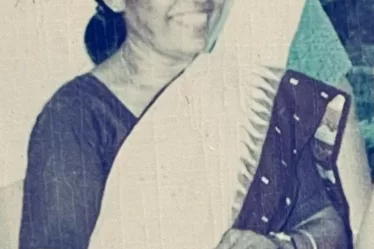It was a quiet morning in Sevagram, a village 20 kilometers from where Gopal (name changed), a small farmer, lived. As dawn broke, his peaceful life took a sudden, violent turn. He woke up with severe abdominal pain, vomiting, and a feeling of extreme weakness. There were no warning signs—no heavy meals, no alcohol, none of the usual causes of indigestion. For a man who lived simply and worked with his hands, his condition was baffling.
With no nearby medical facilities to turn to, Gopal called a close friend. Without hesitation, his friend picked him up on a motorbike, and they rushed to our hospital. By the time they arrived, the village was just waking up, but Gopal’s pain overshadowed the peaceful morning.
In the emergency department, the young doctor moved swiftly, his face set with concern as he examined Gopal. “It looks like acute appendicitis,” he said, arranging for Gopal to be admitted to the surgery ward. There, the surgery resident and a senior resident doctor, their eyes gleaming with anticipation, prepped the new laparoscope, which had recently become a prized asset in our rural hospital.
As they got Gopal ready for surgery, a pre-operative check showed something unexpected. The anaesthetist noticed Gopal’s drooping eyelids and unusual sleepiness for his age. He felt something was wrong and called me in for a second opinion.
When I arrived, Gopal’s eyes were barely open, his eyelids drooping heavily, and he struggled to swallow. The urgency was clear as I noticed these signs. His symptoms didn’t match appendicitis or a common illness. Instead, they pointed to a venomous snake bite, likely from a krait, one of rural India’s most dangerous snakes.
“Where did you sleep last night?” I asked.
“On the floor,” Gopal replied weakly.
“Did you see a snake bite you?” I probed further. He shook his head, but his father added, “We see snakes all the time, especially now during the rains. A jet-black snake with yellow stripes was in our backyard last night.”
The pieces fell into place. This was indeed the silent work of a krait—a nocturnal snake that often slips into homes in search of rats, biting sleeping victims with its thin, needle-like fangs. The bite causes no pain, no swelling, and leaves no telltale signs. Most people are unaware they’ve even been bitten. But the krait’s venom is deadly, paralyzing muscles, including those needed for breathing.
Gopal’s condition was worsening, and his breathing grew laboured as we moved him to the ICU. Our 26-bed ICU is well-staffed and equipped for emergencies, but we often handle cases that city ICUs rarely see: snake bites and pesticide poisoning.
Our ICU nurses, despite exhaustion and sleepless nights, worked tirelessly to save Gopal’s life. Their hard work, often going unrecognized, was key to his survival.
We had to act quickly, and the residents, trained to handle such cases, immediately took charge.
By the time Gopal was settled into an ICU bed—his first experience with a bed, having slept on floors his entire life—his breathing had grown shallower. Though his heart was stable, he could barely count to ten before gasping for air. His eyelids stayed heavy, and he could barely swallow.
The diagnosis was clear: krait venom had blocked the signals between his nerves and muscles. Without quick treatment, his diaphragm would stop working, and he wouldn’t be able to breathe.
We gave him two key medicines—neostigmine and atropine—and inserted a tube into his windpipe to connect him to a ventilator, which helped him breathe. We also gave him antisnake venom, an expensive but life-saving treatment. In villages, Rs 7000 for ten vials is a huge cost, but it was Gopal’s only chance.
Over the next 24 hours, Gopal’s condition slowly improved. His heavy eyelids began to lift. Though he couldn’t speak because of the tube in his throat, his eyes showed it all—he was smiling. His body was fighting off the venom successfully.
Another day passed, and Gopal was breathing on his own. We took him off the ventilator, and a week later, he was ready to leave the hospital. This time, he walked down the stairs, smiling, fully recovered. His friend, who had brought him on the motorcycle, handed him the keys, and Gopal, now stronger, drove himself home.
But this story, like many others in rural India, reminds us how fragile life can be. Krait bites are stealthy and deadly, often mistaken for other conditions like appendicitis or stroke. Yet, with awareness and quick action, lives can be saved. For Gopal, the bite was a wake-up call—a reminder that next time, he might not be so lucky.
It’s time he bought a bed. Luck doesn’t always strike twice.

